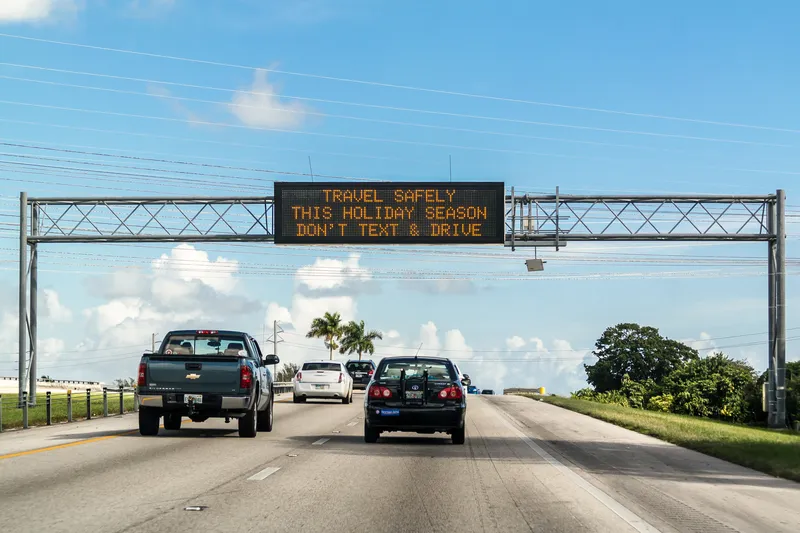
Variable message signs (VMS) have a vital role to play on highways worldwide, alerting drivers in near-real time to events and incidents. Readability is crucial so flickering is a hazard – it’s important that you can quickly and easily absorb the information you are being shown without the graphics dancing in front of your eyes. And as intelligent transportation technology, such as Vehicle to Everything (V2X), moves on, it is vital that roadway hardware keeps pace.
This is where the National Electrical Manufacturers Association (Nema) comes in. Nema is the American National Standards Institute (ANSI)-accredited standards developing organisation, made up of business leaders, electrical experts, engineers, scientists and technicians, which brings together a neutral forum of members to discuss industry-wide concerns and objectives under a legal umbrella.
It has released its latest revision of Nema TS 4-2023 hardware standards for VMS and dynamic message signs (DMS) with NTCIP (National Transportation Communication for ITS Protocol) requirements. NTCIP allows interoperability among various manufacturers of ITS products such as DMS, cameras, signals and communication methods.
“The updated standard aligns and harmonises with other national regulatory standards,” says Jason Morrison, national chair of the Nema TS 4 committee and Daktronics market manager for ITS, parking & public transport.
"As intelligent transportation technology... moves on, it is vital that roadway hardware keeps pace"
The latest revision updates language to align with industry standards for connected vehicles and provides solutions to problems such as flickering, to promote safer roadways and reduce accidents.
“These updates include definitions for VMS and DMS along with guidance on their use when implementing MUTCD [Manual on Uniform Traffic Control Devices]-compliant symbols and graphics,” Morrison continues.
“Other safety and technology issues defined include FCC [Federal Communications Commission] radio interference requirements to ensure uninterrupted service for emergency and mobile phone service, additionally defining minimum display refresh rate requirements for V2X technology.”
Timely change
The signs can emit no radio interference, which means emergency and mobile phone services will not have any interrupted service when near a DMS. The LED refresh rate must also be greater than 200 Hz to reduce refresh or flicker rate, which means autonomous vehicle technology can read all the information on digital signs.
As V2X roll-out and increased levels of autonomy become a reality, this is a timely change. In a blog post, Morrison explained the history of the standards themselves. “It all started in the early 1990s when many different DMS technologies were being installed,” he wrote. “There were no set specification standards, and the industry couldn’t agree on how to define a DMS. So, in 1997, DMS manufacturers came together to form the TS 4 technical committee. In 2005, we published the first National Standard for DMS, and then we released an updated version in 2016.”
"Given the recent prevalence of extreme weather events such as floods and wildfires, there is a clear safety angle"
The latest iteration is important. “VMS and DMS described in Nema TS 4-2023 provide real-time, traffic-related messages. This includes alerts and advisories, early warning messages, alternate route information, travel times and workzone information. They can also assist in disaster recovery efforts and emergency preparedness activities,” adds Steve Griffith, Nema’s executive director of transportation systems.
Given the recent prevalence of extreme weather events such as floods and wildfires, there is a clear safety angle – and for the transport community, this is a welcome update. "Nema TS-4 and the MUTCD are more aligned than ever with this newest revision to TS-4,” says veteran transportation engineer Ransford S. McCourt. “As both documents evolve, the ever-changing discipline of changeable message signs advances toward greater consistency and uniformity in design and construction.”
This can only be a good thing. For its part, Nema believes that standards “play a vital part in the design, production, and distribution of products destined for both national and international commerce”.
They help both user and manufacturer “by improving safety, bringing about economies in product, eliminating misunderstandings between manufacturer and purchaser, and assisting the purchaser in selecting and obtaining the proper product for his or her particular need”.









